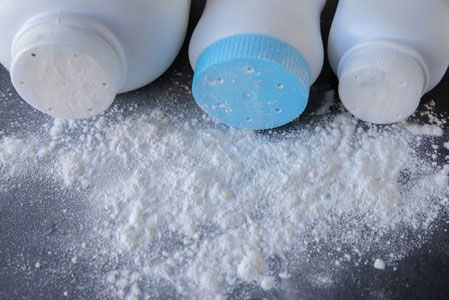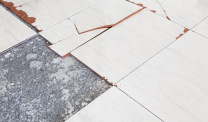Johnson & Johnson Talc-Asbestos Verdict Upheld, Award Cut
Asbestos Exposure & BansWritten by Tim Povtak | Edited By Walter Pacheco

The Missouri Court of Appeals upheld a landmark jury verdict that said long-term use of Johnson & Johnson’s talc products, possibly contaminated with dangerous asbestos, had caused ovarian cancer in 22 women.
The Court of Appeals also reduced the earlier, record-setting award for punitive and compensatory damages from $4.69 billion to $2.1 billion.
A Johnson & Johnson spokesperson said the company would appeal again with the Supreme Court of Missouri.
Johnson & Johnson has been flooded with more than 19,000 lawsuits in U.S. state and federal courts over its talc products, the majority of which pertain to ovarian cancer.
Some of the lawsuits, however, involve malignant mesothelioma, a rare cancer caused almost exclusively by asbestos exposure.
Results in recent trials have been mixed, with the company winning about half and appealing almost all of those it lost.
Johnson & Johnson Stands by Its Talc Products
Johnson & Johnson continues to insist its products are safe to use, but in May announced that it would stop selling its iconic, talc-containing Johnson’s Baby Powder in the U.S. and Canada.
The company cited a declining consumer demand and “misinformation around the safety of the product and the constant barrage of litigation advertising.”
In 2019, Johnson & Johnson recalled more than 30,000 bottles of baby powder after FDA scientists said they had discovered traces of asbestos in one bottle. Johnson & Johnson later said its own test of the same bottle showed no trace of asbestos.
“We remain confident that our talc is safe, asbestos free and does not cause cancer,” a spokesperson said after the latest appeal. “We continue to believe this was a fundamentally flawed trial, grounded in a faulty presentation of the facts.”
If you think you were exposed to asbestos using talc, we can help match you with an attorney. Get the compensation you deserve.
Get Help NowCourt of Appeals Rejects Johnson & Johnson Defense
The Missouri Court of Appeals obviously disagreed with the company’s defense.
“This trial showed clear and convincing evidence defendants engaged in conduct that was outrageous because of evil motive or reckless indifference,” the court said. “Motivated by profits, defendants disregarded the safety of consumers, despite the knowledge that talc in their products caused ovarian cancer.”
In its confirmation of the verdict, the court cited internal company memorandum, some dating as far back as 50 years ago, that there was concern about possible asbestos contamination in its talc.
This most recent appeal stemmed from a jury verdict in 2018 where the jury originally awarded $550 million in compensatory damages and $4.14 billion in punitive damages. The reduction dropped to $500 million and $1.62 billion, respectively.
Attorneys representing the plaintiffs said during the appeals process that six of the women had died before the 2018 trial began and five more have died since it ended.
Of the original 22 plaintiffs, 17 were not Missouri residents, which led to the reduction in damages based upon the talc product they allegedly used.
Johnson & Johnson appealed the original verdict, insisting that plaintiffs failed to present substantial evidence that the talc products had caused their cancers.
After the appeal announcement, the attorney representing the plaintiffs encouraged consumers to discard any Johnson’s Baby Powder they might have at home.
“All you can do is fine them, and we need to fine them sufficiently that the industry wakes up and takes notice,” attorney Mark Lanier said.
FDA, EPA Getting Involved in Talc-Asbestos Issue
The issue of talc contaminated with asbestos stems from the mining of the products, both naturally occurring minerals found in close proximity near the Earth’s surface.
This dispute often centers upon different testing methods for the contamination, along with quantifying elongate mineral particles, which have the same composition and structure as asbestos particles.
In March, the FDA announced it had found asbestos-contaminated talc in nine of 52 products it tested during a year-long study. Johnson & Johnson’s Baby Powder was one of the nine. The other eight were makeup products.
The FDA is in the midst of formulating a uniform testing method that companies will be required to use in searching for asbestos in cosmetic talc.
Asbestos already is heavily regulated by law, but the U.S. Environmental Protection Agency also is in the midst of tightening those regulations further or possibly banning the product completely.






